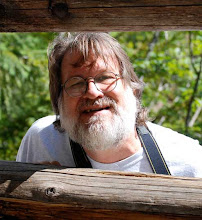Dying to Live
On Saturday I went to another Seattle IANDS meeting to hear more people talk about the experience of dying and what they encountered during their unplanned adventures before returning to this world.
This month’s meeting was particularly interesting to me because it featured a seasoned journalist and a 14 year-old boy as speakers.
The seasoned journalist reminded me in some ways of the character Ellie Arroway in the movie Contact. Here was a guy trained in journalistic skepticism who in the 1980s experienced a white water rafting accident that brought him to the brink of death. While his body was thrashing about in death throes, being totally unable to do anything to save his hide in class 5 rapids, another part of him shot off into a world way outside of our physical realm. And when he returned, he had to explain what happened, at least to himself. (As you’ll recall in the movie, the Jodie Foster character had to explain her mystical adventure out of time.)
Imagine being dunked into the swirling, churning currents of a mighty river. You’re unable to control anything; the rushing water owns your destiny. You’re being battered mercilessly against granite boulders. Life feels over and done with—death feels imminent. Meanwhile, your mind/soul is simultaneously somewhere else having a complete life review! Suddenly you remember everything that you ever thought or did during your life, and what’s more, you literally feel every feeling that anyone who interacted with you felt during that event—all the good and all the bad.
Meanwhile, as all this was going on, he also became aware that answers to all his questions came to him telepathically. (That’s the part I look forward to!)
The second speaker was a boy who remembers leaving his body and traveling through a tunnel to the light when he was only six months old! As is typical of kids, according to Kimberly Sharp Clark, this young fellow told his story in about a minute. No fuss, no muss, no heady extrapolations, no deep philosophizing. I’m paraphrasing: “Left my body, went through a tunnel into the light. I met a guy in a white robe with red eyes who told me I had to go back.” So much for drama.
This story came to light when the kid when he was three and could talk. He told his mother about it. His mother, who said she didn’t have a clue about near-death experiences back then, was wise enough not to contradict him and instead over time drew the story out. While it is conceivable that a 14 year-old could parrot what he’d read or heard about NDEs, it’s highly unlikely that a 3 year-old could or would. The mother added that her son said that he was wild about all the love he felt in the other place, words she found hard to hear. After all, she loved him and provided a nice home. “It’s different,” he told her.
The journalist described the difference (and I am paraphrasing) as being thousands of times more intensely blissful than being welcomed home by your mother (or someone who loves you dearly) after a long absence.
For me, the reason to study near-death experiences is that they reveal a picture that life is much larger than the physical reality we’re conditioned to believe in. That to me is wildly exciting! It means that so much of the suffering the 24/7 news shows us might be incredibly misleading.
Is this religion? To me it’s not. To me it’s nature. It’s hearing or reading a bunch of different accounts of people who enter a different dimension; then it’s putting those accounts together into a personal philosophy. Many NDErs find church irrelevant and the news misguided.
Another interesting thing about NDEs is that they are not all the same. Each person experiences his or her own journey. In the NDE literature, you find people who have blissful adventures in the light before they come back to this plane. Other people experience hellish journeys. Some have a little of both. The reason for the wide variety appears to be that consciousness creates reality and you get what you put out or what you believe.
Research is showing, for example, that not everyone goes through a tunnel or sees the light. Not everyone sees light beings or “dead” relatives or awesome worlds.
So much of our suffering in this world is thinking that we cannot do anything to improve our situation, our reality. People who come back from NDEs often return with intense motivation to right some wrongs they committed. They often become highly interested in the cause of promoting love and aiding fellow humans. They also often believe that they can change their reality, largely because their perception of reality has been so altered.
If the brain literally creates NDEs and the resulting psychological changes, as skeptics suggest, someone should be researching what that process is because it truly is remarkable (and bloggable.) The people who have been there shake their heads and say variations on, “Ain’t no dream. Ain’t no hallucination.”
Skeptics usually criticize people who have written books about NDEs. They talk about such things as the author’s profit motives and lack of scientific proof of death. I have learned through the support group atmosphere of IANDS groups that people who have been there and who aren’t selling anything are also seeking answers. They want to know what happened to them when they saw the light.
“Oh, well, you just have a wild imagination” is not a good answer.


0 Comments:
Post a Comment
<< Home